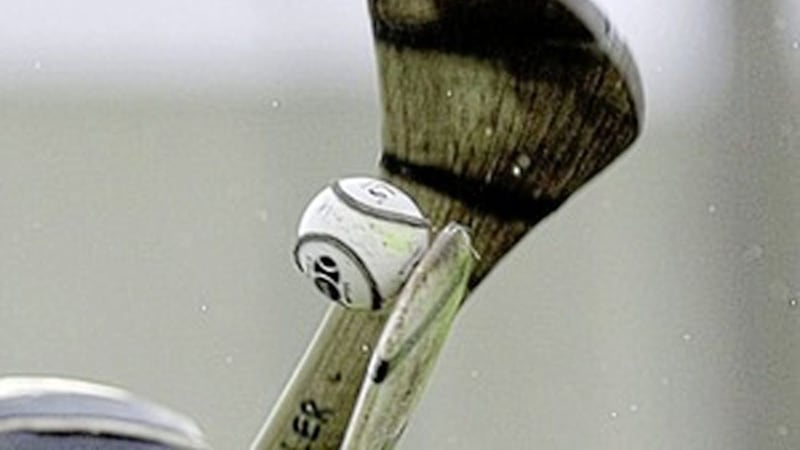‘THIS is rugby country’ was a marketing slogan which, quite rightly, was sneered at.
Yet rugby has a greater claim to be ‘the national game’ than hurling. So has soccer, despite the ongoing split.
Both have greater depth of competition across more of Ireland than hurling does.
In Gaelic games there’s no contest.
Gaelic football, although half its senior championships have been won by just two counties, Kerry and Dublin, has had 19 different winners in total.
Hurling has had only 13, counting London.
To some extent there’s been an increased competiveness in hurling recently, with first Galway (2017) and then Limerick (2018) bridging gaps of 29 and 45 years respectively to lift the MacCarthy Cup.
However, the ‘Big Three’ of Kilkenny, Cork, and Tipperary have still won more than 70 per cent of All-Irelands between them though.
And it’s getting on for 22 years since Offaly triumphed – and they can’t do so this season – while Wexford’s wait is almost 24 years.
Waterford have gone more than 60 years without ultimate success.
Geography is the most damning aspect of this debate though.
Hurling is almost completely split by a north-south divide on the island.
Hurling’s glass is full in the southern half of the island – but almost empty in the north.
Above the imaginary line from Galway across to Dublin, the Liam MacCarthy Cup has only ever been a visitor, never a permanent resident.
Realistically, since Dublin’s last All-Ireland in 1938, that line could be angled sharply downwards to the border between Wicklow and Wexford.
If not for Galway hurling would only really count at the top level in two provinces, Leinster and Munster.
Of course, it can be pointed out that football’s Sam Maguire Cup hasn’t been won by a Connacht county since 2001 (Galway), the only time it went west in the last half-century and more.
However, Mayo have at least been knocking hard on the door, with appearances in four finals in the past eight years alone.
In contrast, consider Ulster hurling.
It’s 31 years since Antrim reached the All-Ireland SHC Final. Forty-six years had elapsed since their previous appearance in a decider. Their only other.
Two Ulster appearances. Ever.
Lost by 18- and 27-point margins respectively.
This is not to do down Antrim, whose club sides have won and challenged hard for All-Irelands over the past decade.
Yet over the same timeframe on the county front standards have slipped further than ever and sights have been lowered.
The 2010 game when a good Antrim team shocked Dublin in Croke Park is now warmly recalled - but the Saffrons then lost by nine points to Cork, who lost by 12 to Kilkenny, who lost by 11 to Tipperary in the final.
The situation had appeared much brighter a decade earlier. New Ulster champions Derry fought out a brilliant, frenetic battle against eventual All-Ireland finalists Offaly.
Two years after that Antrim troubled Tipperary, despite the 10-point gap at the end. The following season Wexford only edged past the Saffrons by three points.
That same year, 2003, the Hurling Development Committee drew up plans to separate the hurling championship into three tiers, with 12 teams at the top level – Antrim the only county from the northern half of the island.
Now there are five tiers, with only 10 counties competing for the Liam MacCarthy Cup (although two sides from the second tier Joe McDonagh Cup could conceivably win entry).
In recent years the lower tiers have been got over and done with by June, almost as if it’s better to just get them out of the way.
If Championships can go ahead this year at least the timing will be different, although the likelihood is that the Lory Meagher, Nicky Rackard, Christy Ring, and even McDonagh Cup will still be largely overshadowed by the MacCarthy and the Leinster and Munster competitions.
Perhaps, though, this enforced pause in proceedings should give us pause, make everyone think about a re-set.
Hurling hasn’t really grown outside the original strongholds from the GAA’s foundation in 1884.
There are even more deep-rooted historical reasons for the divide, between two different types of hurling in the two ‘halves’ of Ireland.
Yet the facts of the matter are that, for more than half the country hurling is akin to the English Premier League compared to the local equivalent: a top level iteration of the sport watched on TV or from the stands.
Change will take time, effort – and money. But it can be achieved.
Football has demonstrated that, moving on from the Leinster-Munster duopoly of the the Seventies and Eighties.
Hurling’s weakness in the northern half isn’t down to a lack or talent nor a lack of interest.
The real reasons are (relative) lack of numbers participating, the lack of investment, the lack of coaching and coaches.
The GAA will have to take some hard decisions about finances over the next few years.
The easy thing to do would be to keep on accepting that hurling is only strong in the south.
Yet the inclusive, collective approach for a bigger, better game all round would be to set targets for progress by counties above that Dublin-Galway line – and give them the means to make advances.
There’s been some nudging northwards in respect of some counties on the cusp, Meath and Westmeath, but short-term gains appear hard to sustain.
Ulster hurling, even with encouraging showings by Antrim earlier this year, isn’t realistically getting any closer to an All-Ireland (Liam MacCarthy Cup) final; it’s getting further away. The same goes for the rest of Connacht beyond Galway.
Sure, there’ll always be certain counties stronger than others, as is the case in football.
But basically giving up on half the country as regards the supposed national game isn’t acceptable – is it?






